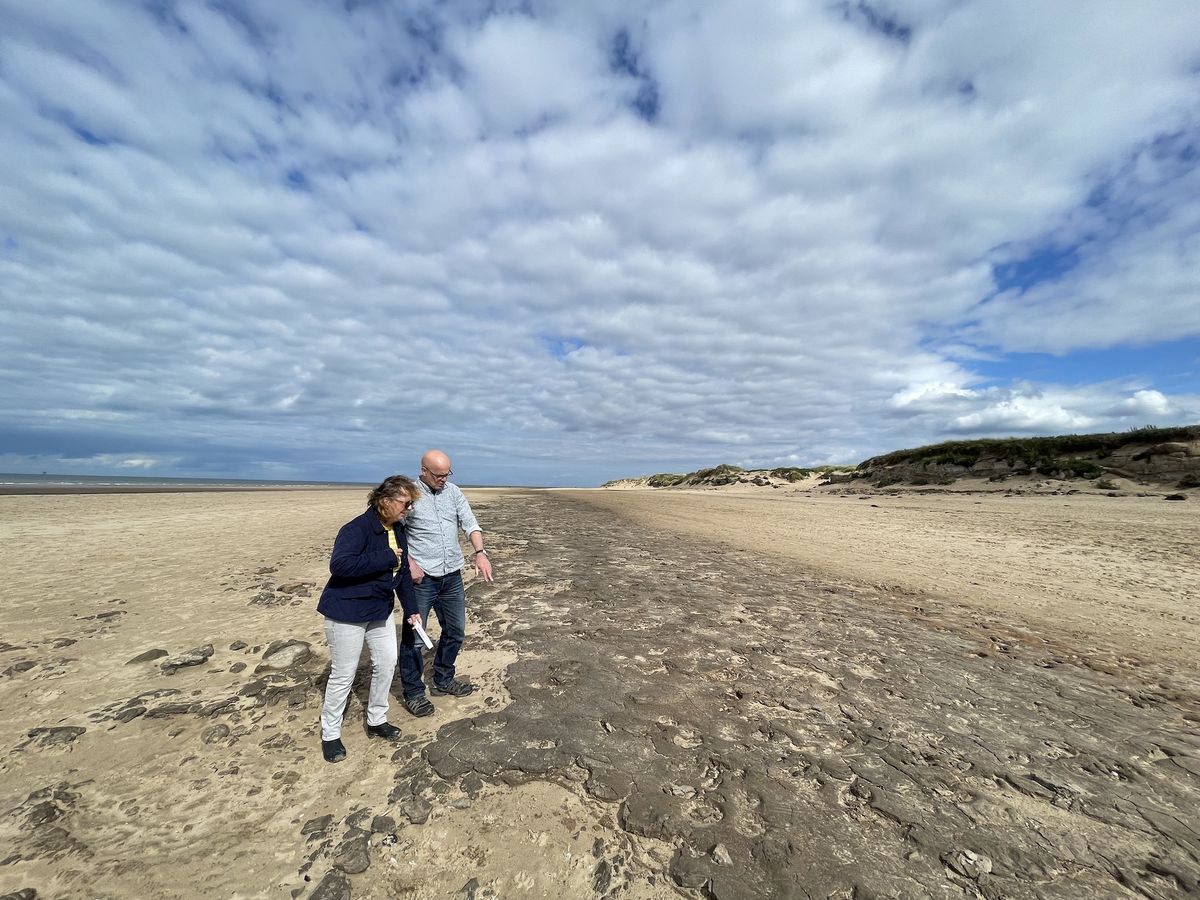Superhighway of ancient human and animal footprints in England provides an 'amazing snapshot of the
Superhighway of ancient human and animal footprints in England provides an 'amazing snapshot of the past'
By Jennifer Nalewicki published 2 days ago
Erosion along a beach in England has revealed ancient human and animal footprints.

Study authors Alison Burns and Jamie Woodward inspect 8,500-year-old animal and human footprints in one of the mesolithic mud beds in England. (Image credit: Victoria Gill/BBC)
Thousands of years ago, a swath of land along what is now the western coast of England served as a superhighway for humans and animals alike. Today, the ebb and flow of each passing tide reveals more of the ancient footprints that these long-gone travelers stamped into the once mud-caked route.
Reminders of their travels can be seen along a nearly 2-mile-long (3 kilometers) stretch of coastline near Formby, England. The footprint beds show how, as glaciers melted and sea levels rose after the last ice age ended around 11,700 years ago, humans and animals were forced inland, thus forming a hub of human and animal activity seen in the commingled footprints.
In a new study published in the October issue of Nature Ecology and Evolution(opens in new tab), researchers found that the trackways, some of which are more than 8,000 years old, date from the Mesolithic period, or Middle Stone Age (15,000 B.C. to 50 B.C.) to medieval times (from A.D. 476 to A.D. 1450). Researchers recovered seeds from alder, birch and spruce trees scattered within the layers of the route and radiocarbon-dated them to pinpoint the age of the tracks.
In total, there are a dozen "well-preserved" footprint beds, some of which are stacked, creating roughly 36 exposed layers, or "outcrops." These patchworks of prints contain foot impressions from not only humans but a variety of animals, including aurochs (an extinct species of ox), red deer, wild boars, wolves, lynx and cranes.
More:
https://www.livescience.com/ancient-human-animal-footprints-england
